Paddling to Eagle Lake: on the trail of Ned Buntline, the infamous desperado of the 1800's
How a dime-store novelist created the culture of Buffalo Bill and the Wild West
Who was Ned Buntline?
Ned Buntline was the pen name of Edward Zane Carroll Judson, an American writer and journalist. Born in 1821 in upstate New York, Edward left his family at a young age to join the Navy. After a somewhat tarnished career serving as a cabin boy and mid-shipman aboard ships, he resigned to pursue a career in newspapers.
Buntline is a nautical term use to describe a line or knot used in securing a ship or boat.
From Edward Judson to Ned Buntline
Judson’s true passion was writing stories about mis-deeds, crime and adventure in the Wild West. He had the knack of weaving his own experiences in crime into his dime-store novels. Over the years, he started several newspapers and literary magazines but most of them failed. Along the way, Buntline lived a life of a thief, rioter, gambler, bounty hunter and womanizer.
Mysteries and Miseries of New York: A Story of Real Life
Buntline moved to New York City and started writing feverishly for several magazines. In 1848, his book - The Mysteries and Miseries of New York sold 100,000 copies. The book was set in the whorehouses and gambling dens of Manhattan - places that Buntline frequented.
Today, the first edition of the book (pictured below) currently sells for over fifteen-hundred dollars by Christies Auction House.
Buntline’s role in the rise of the Wild West culture of Buffalo Bill
Buntline was always on the hunt for new material for his stories. A chance meeting in Nebraska around 1869 with a young man by the name of Bill Cody started a long friendship between the two. Buntline spent the next several years crafting his stories around Buffalo Bill Cody. He wrote a stage production called Scouts of the Prairie in which he starred alongside Buffalo Bill. The show traveled from Chicago to the East Coast.
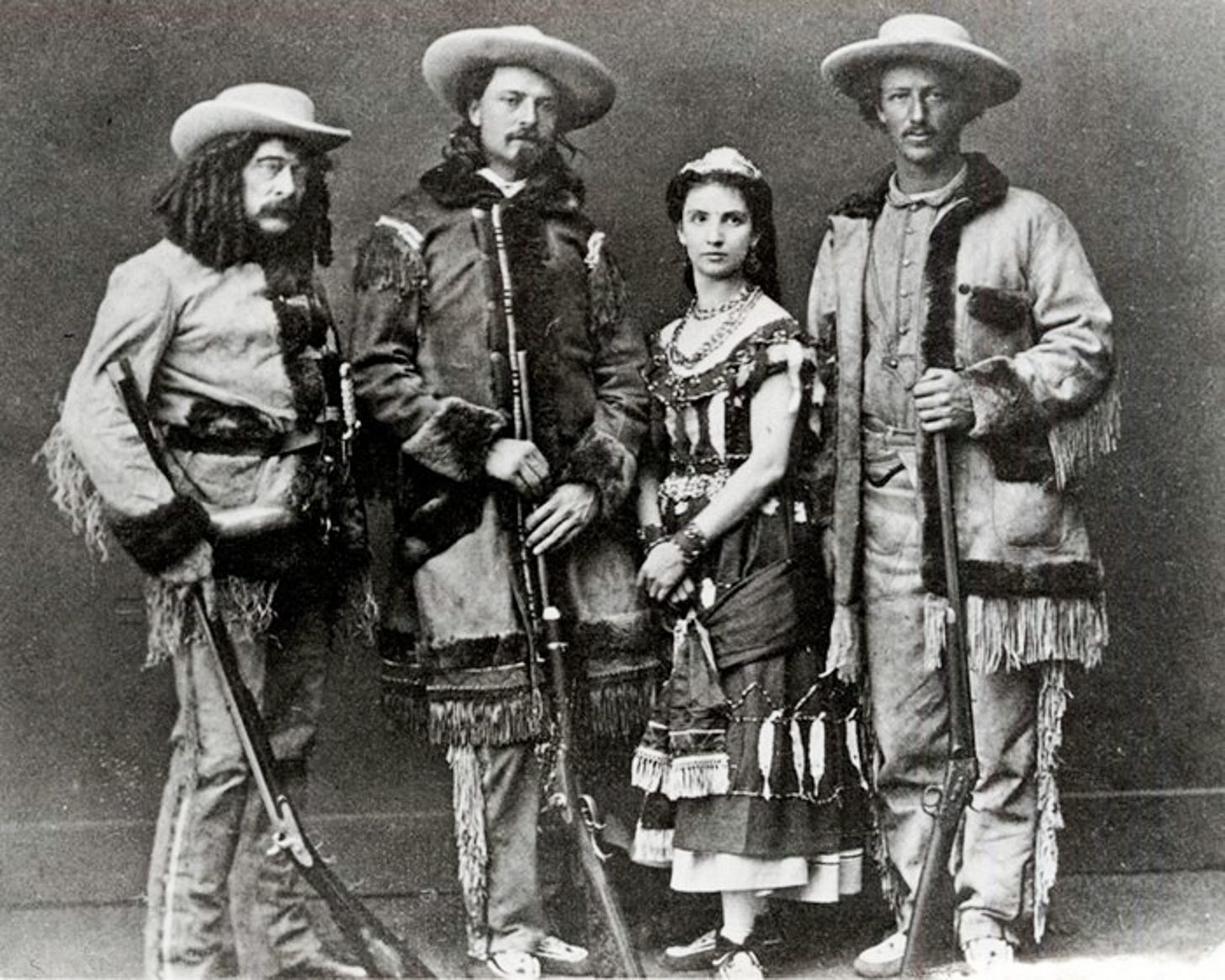
Some of the books written by Ned Buntline
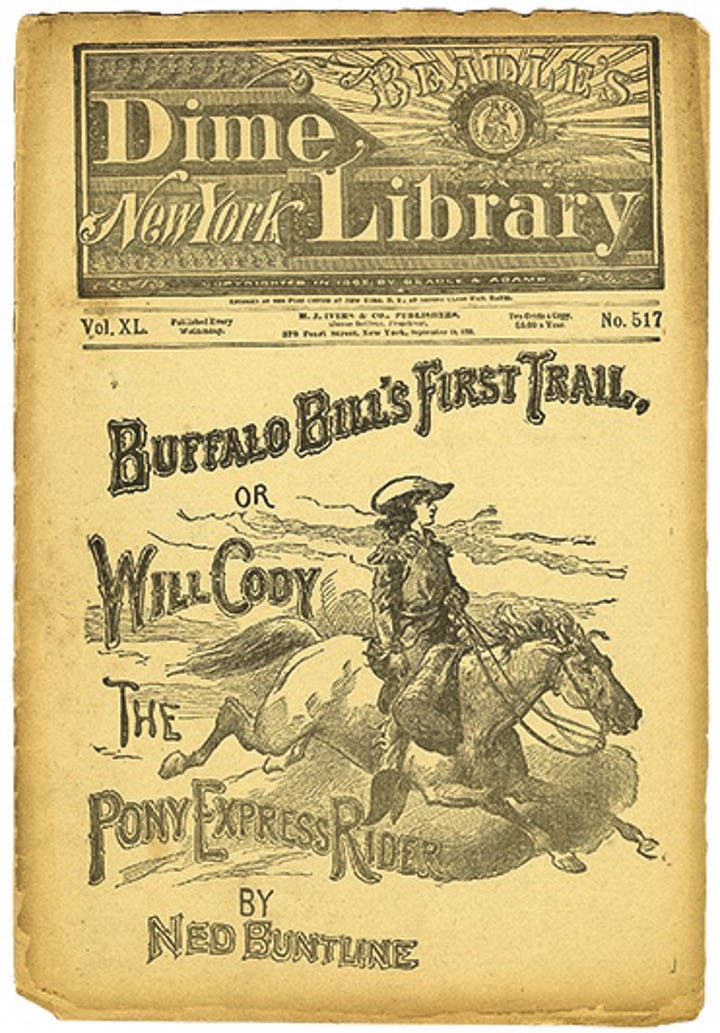
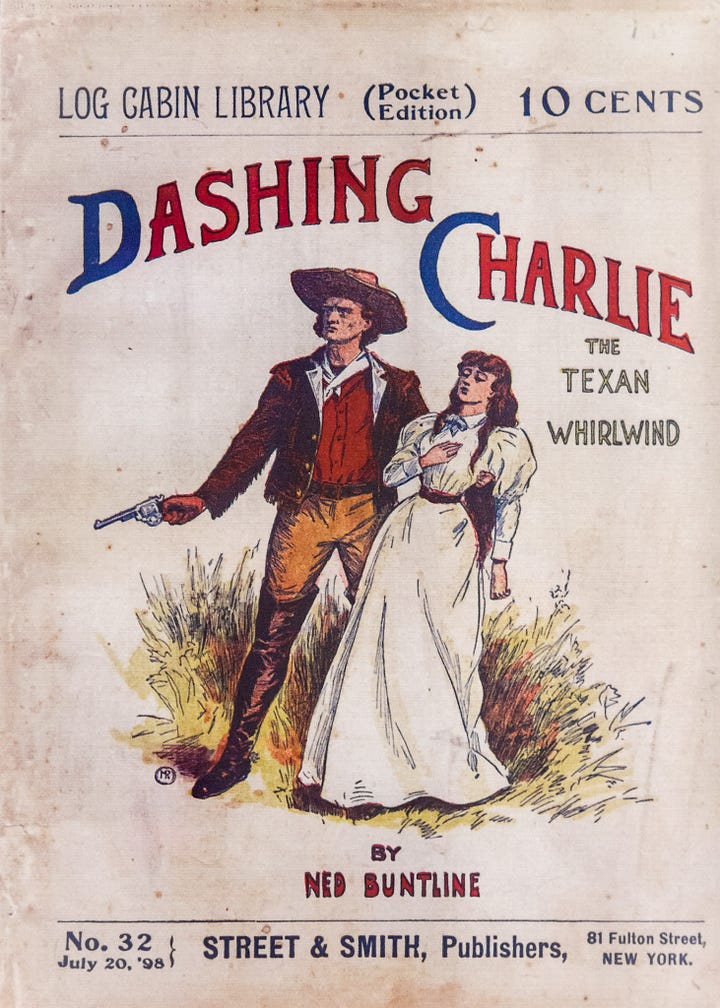
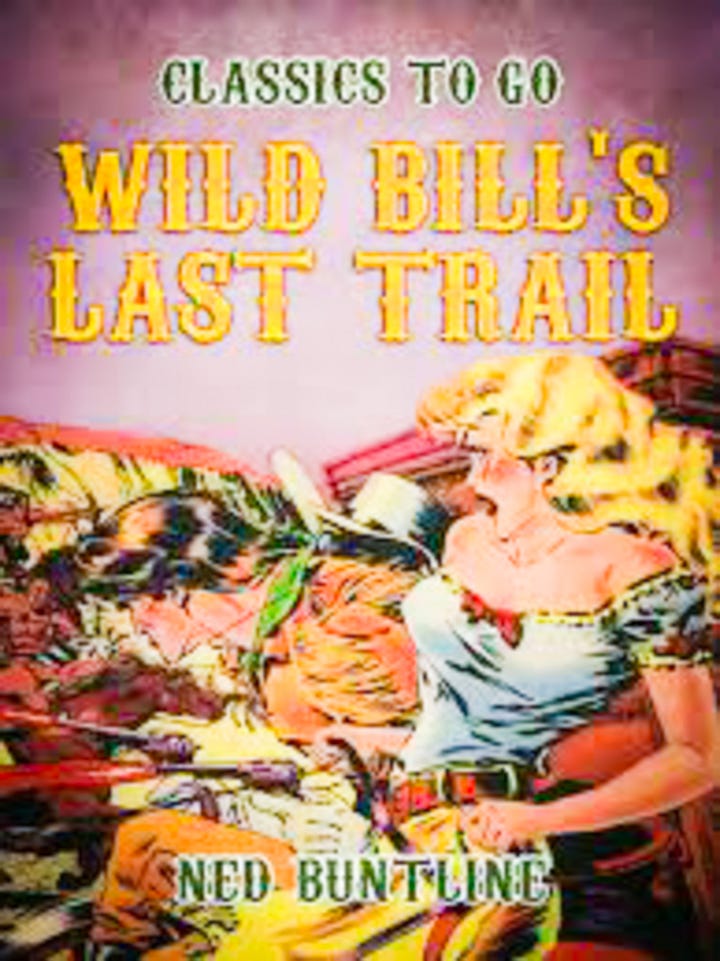
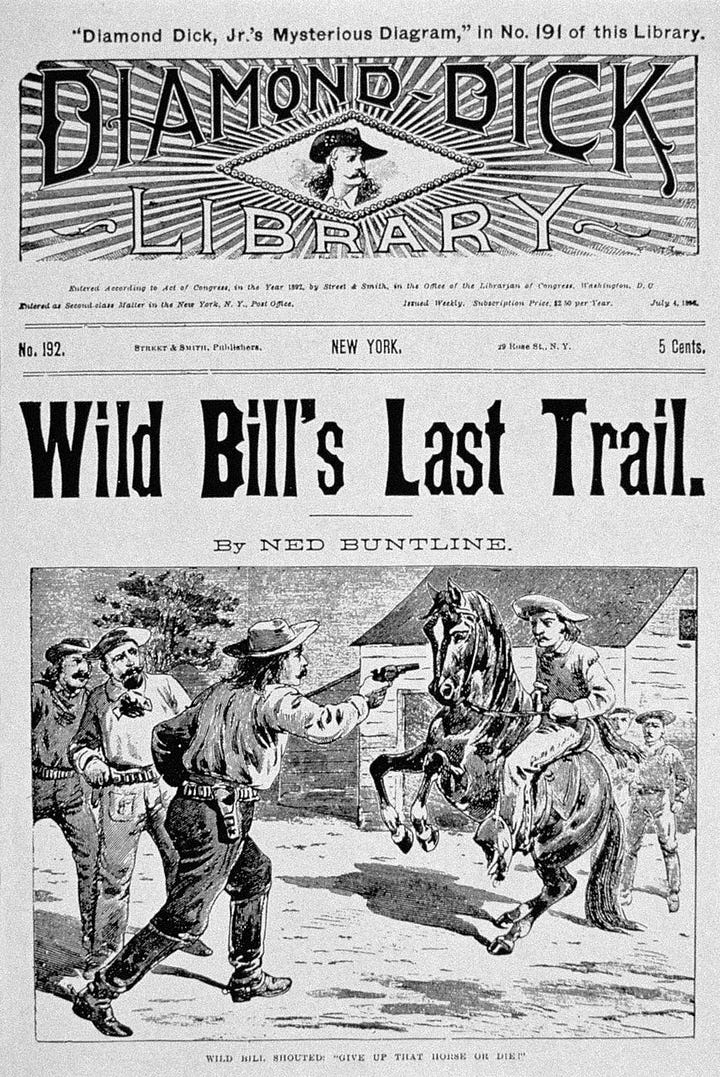
Buntline is remembered now as "the creator" of Buffalo Bill, but in his day he was indeed notorious. He incited riots and married multiple women (often at the same time) and murdered jealous husbands of the women he wooed and was as widely read as Mark Twain or any other writer alive at the time. - Julia Bricklin
Following the trail of Ned Buntline to his past farmstead on Eagle Lake in the Adirondacks
Over the years, Buntline escaped to the Adirondacks to hunt, fish, relax and write. He built a large cabin near the shores of a small lake and established a small gentleman’s farm. Buntline was happy and productive on his farm - his writing was prolific making his publishers happy.
Buntline named his farm - Eagles Nest - after watching a pair of eagles nest each year near his cabin.
The New York Times (1860) wrote that Buntline had fifty varieties of seeds from Grant Thorburn’s growing in his garden, seven varieties of corn, and thirty-three kinds of flowers. He has built a commodious ice-house, which he fills from the lake with crystal cakes, and keeps his trout and venison from spoiling. He makes maple syrup from the trees. - Larry Miller via the Adirondack Almanack
Today, Eagle Lake is officially located in the community of Blue Mountain Lake, New York. All the land surrounding the lake is privately held. Residents use a private road to access their properties. Access to the lake is available to the public through two access points - via a narrow channel from Blue Mountain Lake or through Utowana Lake.
A paddle to Eagle Lake to explore the past
On a hot day this summer, the plan was to paddle across windy Blue Mountain Lake to the narrow channel that connects to Eagle Lake. Hopefully, an early start would help to avoid the wind and the wake of the bigger boats.
As we launched from the sandy beach in Blue Mountain Lake, the water lightly rippled across the lake. The mountains beckoned in the distance. With anticipation of what we may find on Eagle Lake, we pushed our canoes into the dark blue water and started to paddle towards the narrow channel that leads to Eagle Lake. We stuck close to the southern shore to avoid any issue with the wake.
Blue Mountain Lake is dotted with summer cottages and quite busy during the summer. However, during this early hour, not much activity was seen. After paddling for about 40 minutes, we entered the narrow channel that takes one from Blue Mountain Lake to Eagle Lake. Ahead, we could see a bridge which signifies the entry-way for boaters into Eagle Lake.
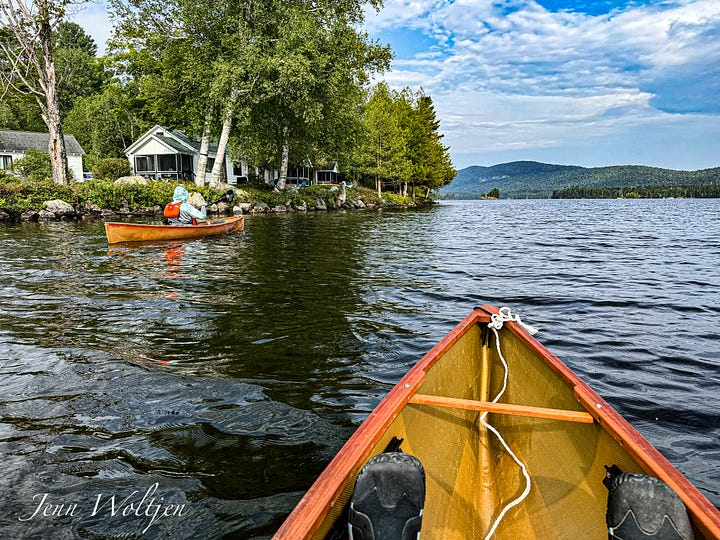
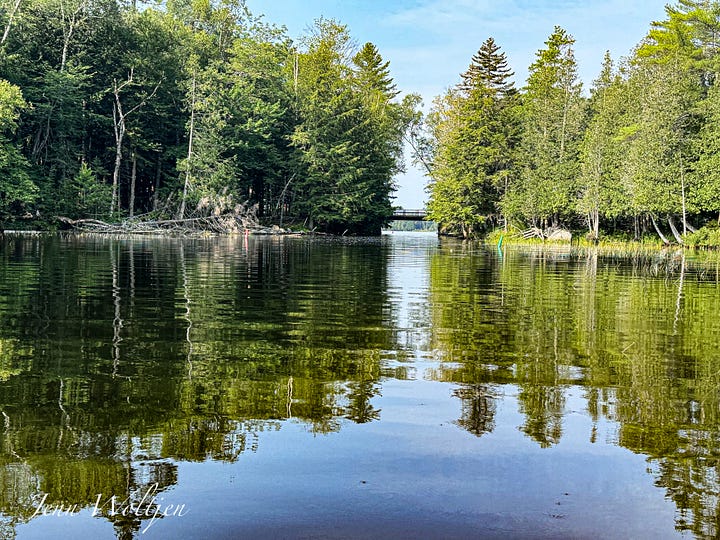
After paddling under the bridge, we discovered another bridge immediately to our right - the historic Durant Memorial Bridge. Both bridges provide access to the residents who own the land surrounding Eagle Lake.
The Durant Memorial Bridge was built in 1881 by William West Durant in memory of his father, Dr. Thomas Clark Durant. The Durant family developed and built railroads, steamship companies and Adirondack Great Camps, including Great Camp Sagamore.
After spending some time exploring the Durant Bridge and the shoreline around both bridges, we discovered that all the adjacent land was private - posted as such. We continued our paddle across Eagle Lake hugging the southern short to explore more. Eventually we found a quiet and deep cove to investigate. Disembarking, we enjoyed lunch and relaxed. We found solitude as we listened to the sounds of the forest and the rippling of the water.
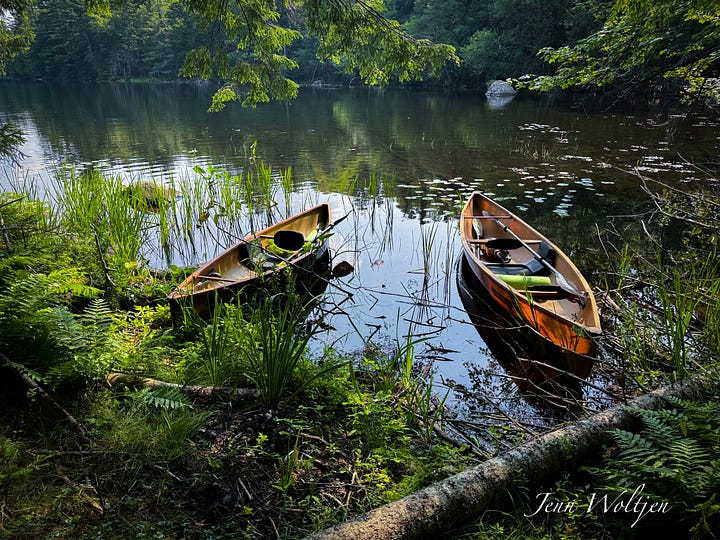
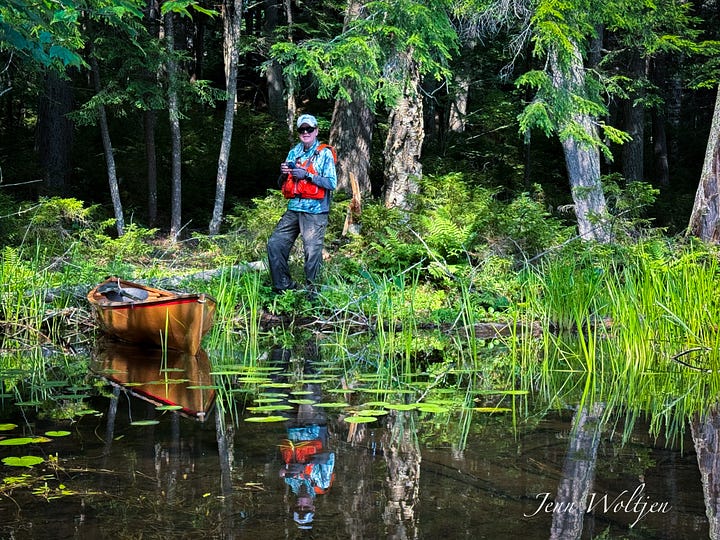
Heading back to Blue Mountain Lake to beat the wind
The day started to warm up. We decided we needed to head back before the wind picked up across the lakes. We paddled back down Eagle Lake and under the bridge into the narrow channel. However, as soon as we exited the narrow channel and entered Blue Mountain Lake, the wind rushed into our faces. In the distance, we kept our eyes focused on the peak of Blue Mountain to keep us motivated. As we paddled hard, we felt the spirit of Buntline behind us - pushing us to get to our destination.
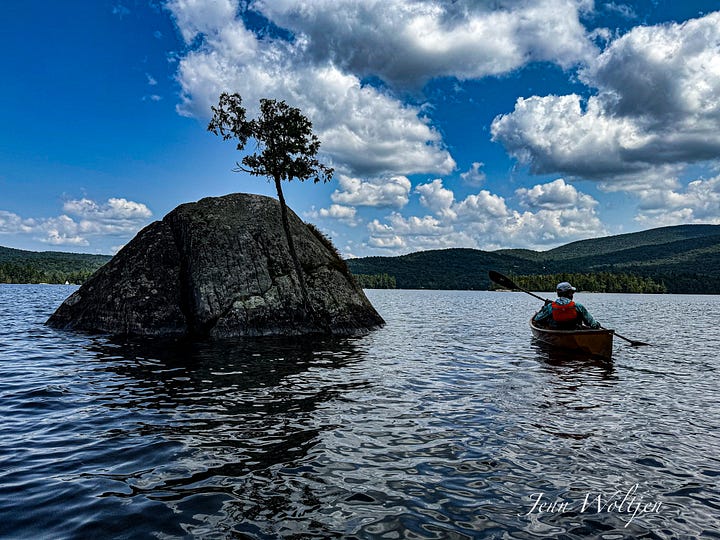
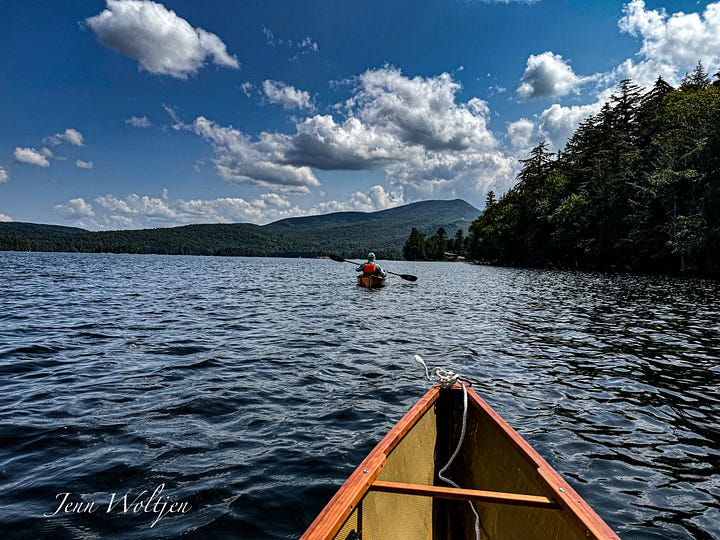
Buntline’s writing legacy lives on today at Eagles Nest
Today, a non-profit retreat operates on the property once owned by Buntline. William West Durant built a historic great camp here in 1899 on Buntline’s land and land acquired by Durant. The retreat, called the Blue Mountain Center, offers a place for writers, artists and activists to collaborate and work on projects.
Coming full circle: the Blue Mountain Center’s mission - a nurturing environment
Today, Blue Mountain Center offers a unique refuge to artists, activists, organizers, and cultural workers who produce transformative work for their times. We trust residents and conference attendees to choose the rhythm they need to counter the pressures of the world, whether through collaboration or solitude, work or rest, in a nurturing environment where they can connect to themselves, local and global movements, the land and story of the Adirondacks….
Books & Media about Buntline
The Great Rascal by Jay Monaghan
The Hero of a Hundred Fights: Collected Stories from the Dime Novel King by R. Clay Reynolds
The Notorious Life of Ned Buntline: A Tale of Murder, Betrayal, and the Creation of Buffalo Bill by Julia Bricklin
Legends of the Old West: Ned Buntline: Pirates and Heroes
Thanks for coming along on my paddle adventure.
If this is your first time here, a little bit about me.
I have a reputation for constantly pursuing new adventures. A long-time runner, nordic skier, and endurance junkie, I have dabbled in running and skiing ultra marathons and climbing mountains over 14,000 feet. The bulk of my professional career was spent working in finance, higher education and most recently as a running coach.
I have written and published numerous articles online for my running and fitness followers. Inspired by my high school journalism teacher and mentor, I sense an urge to remain connected to the outdoors and share my journey with others.
Hope you can come along.
The adventure continues.


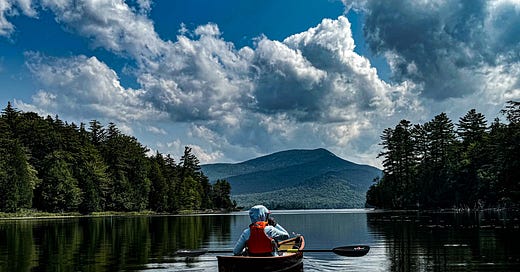



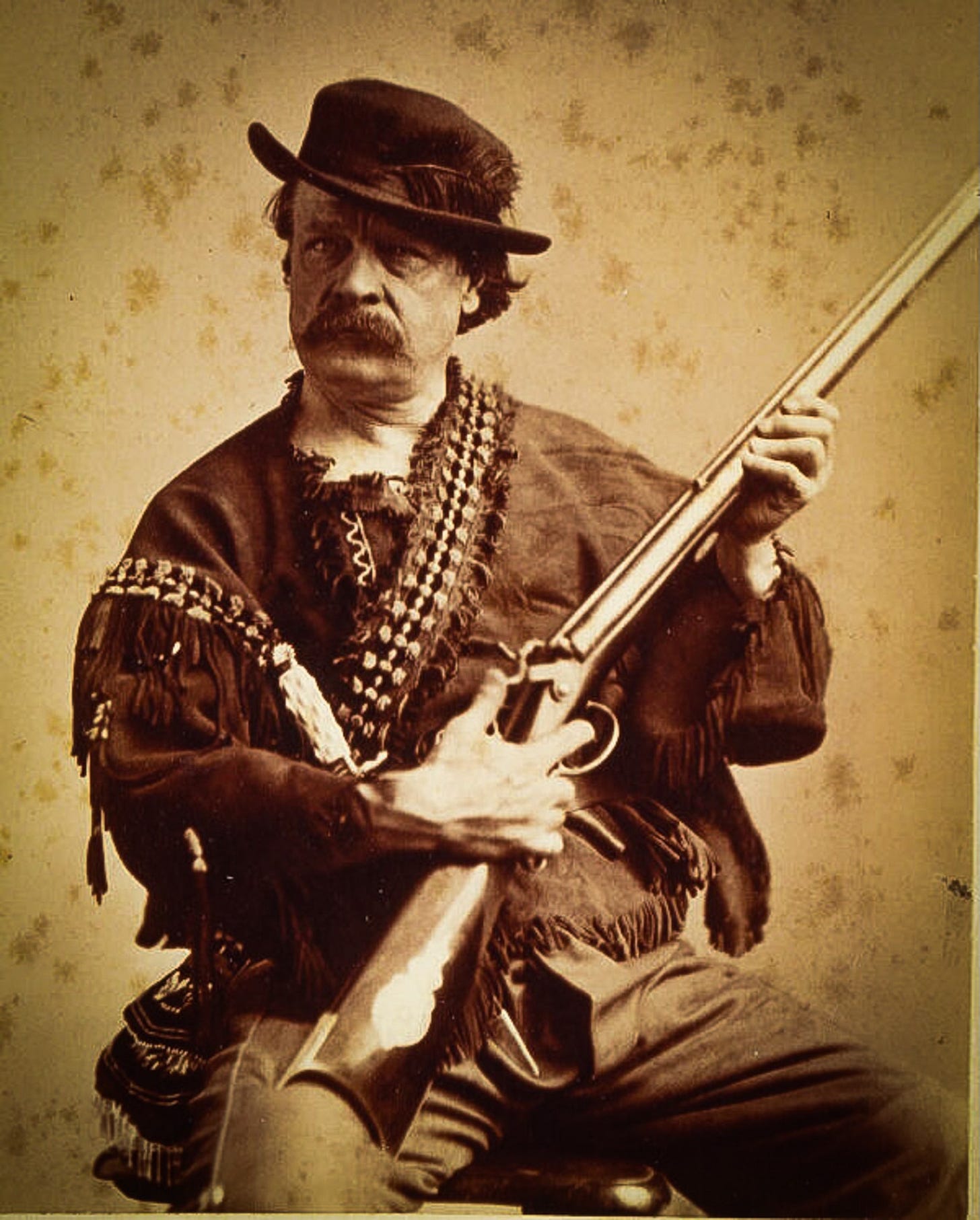
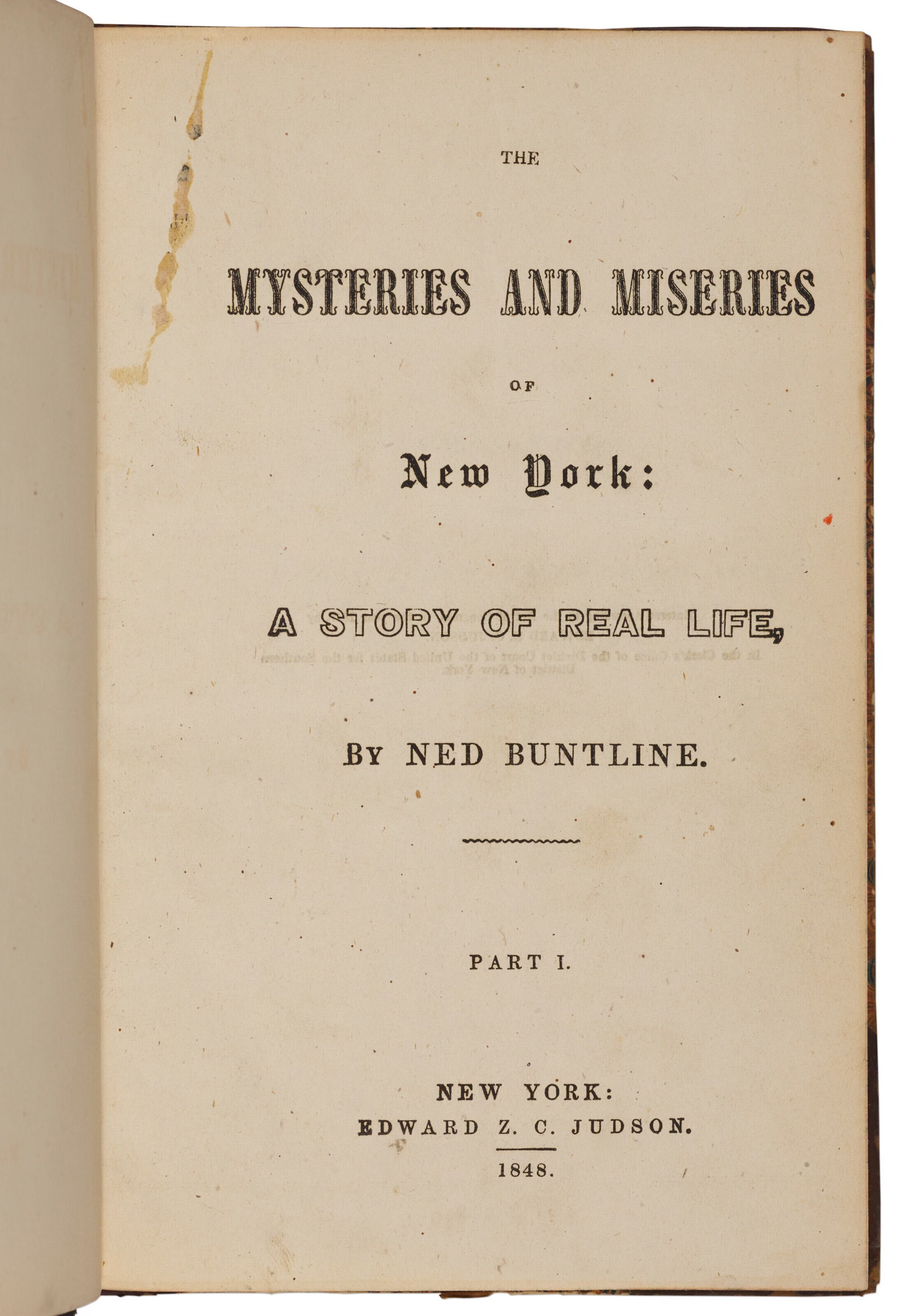

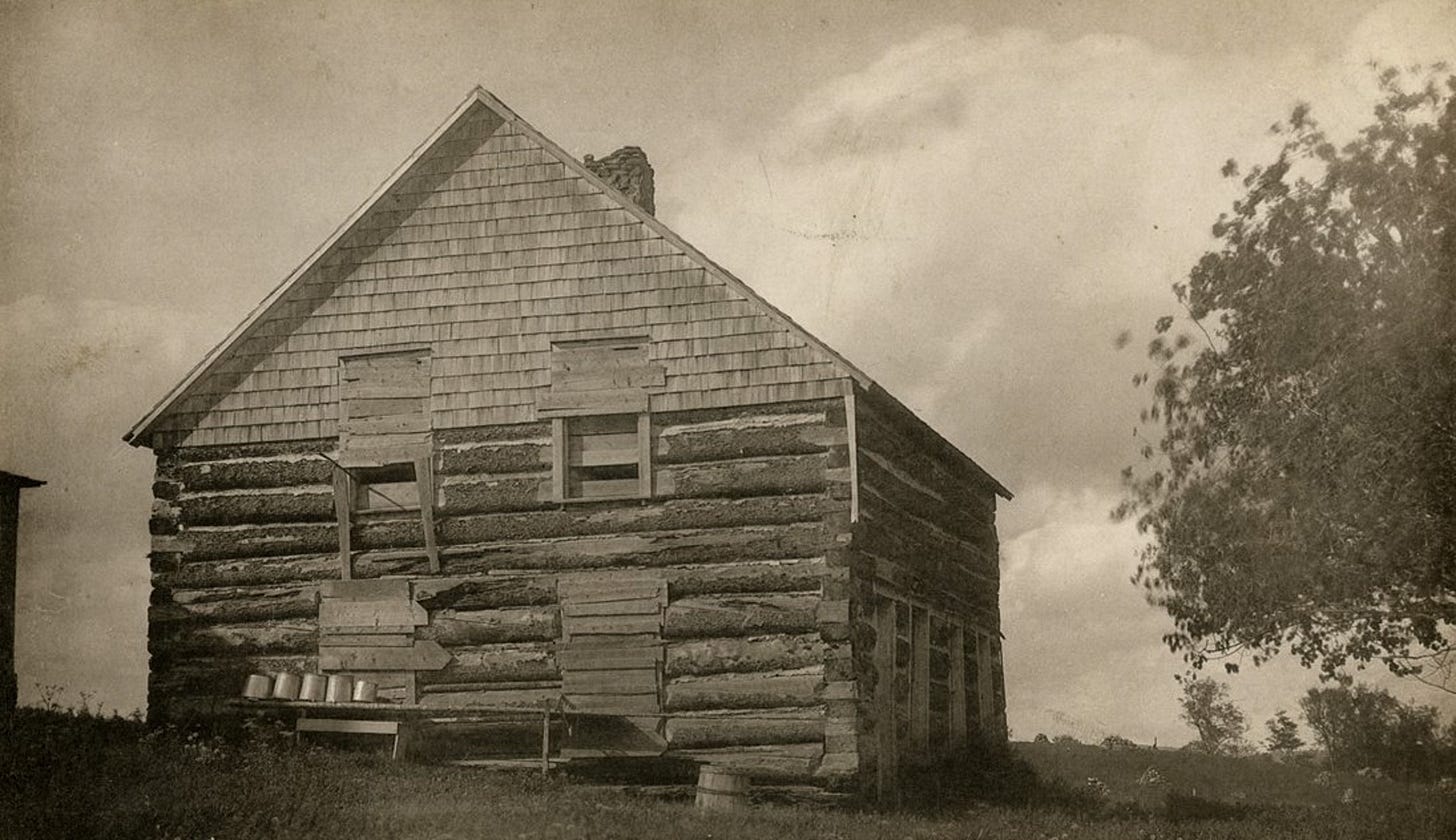
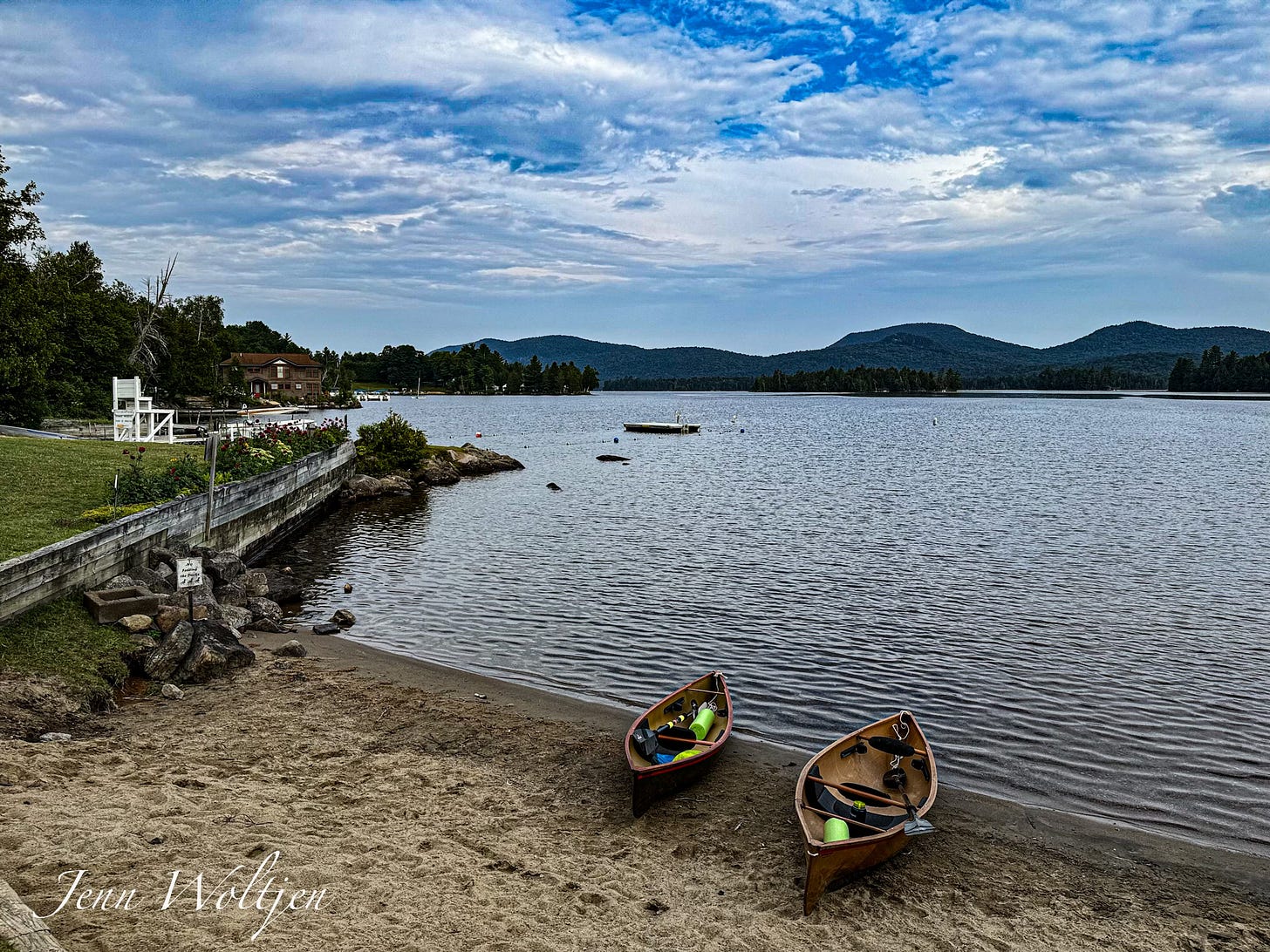
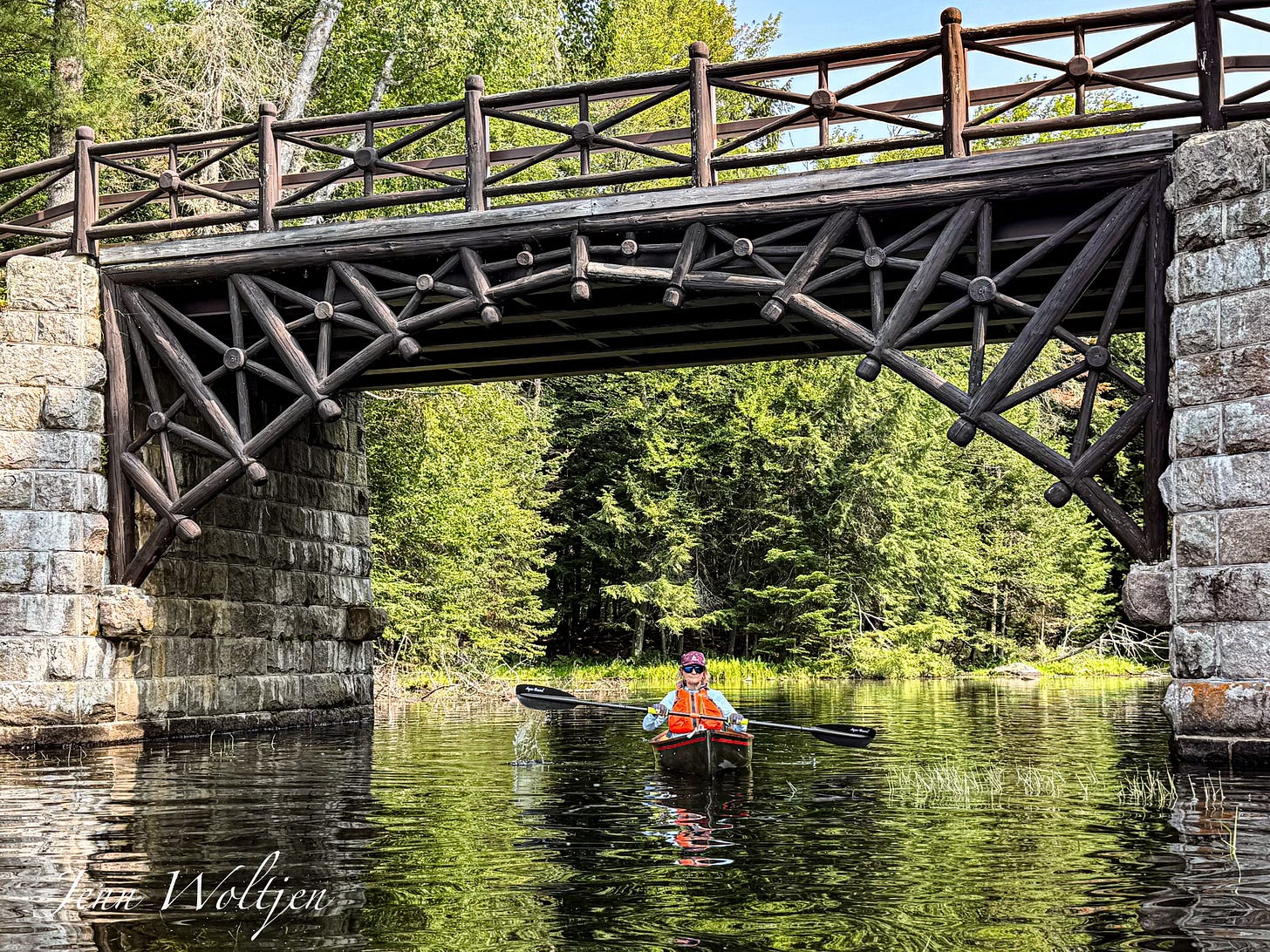

I love how you weave in history with your adventures in nature and the images take me to the places you explore.
Fascinating read Jenn. Thank you.